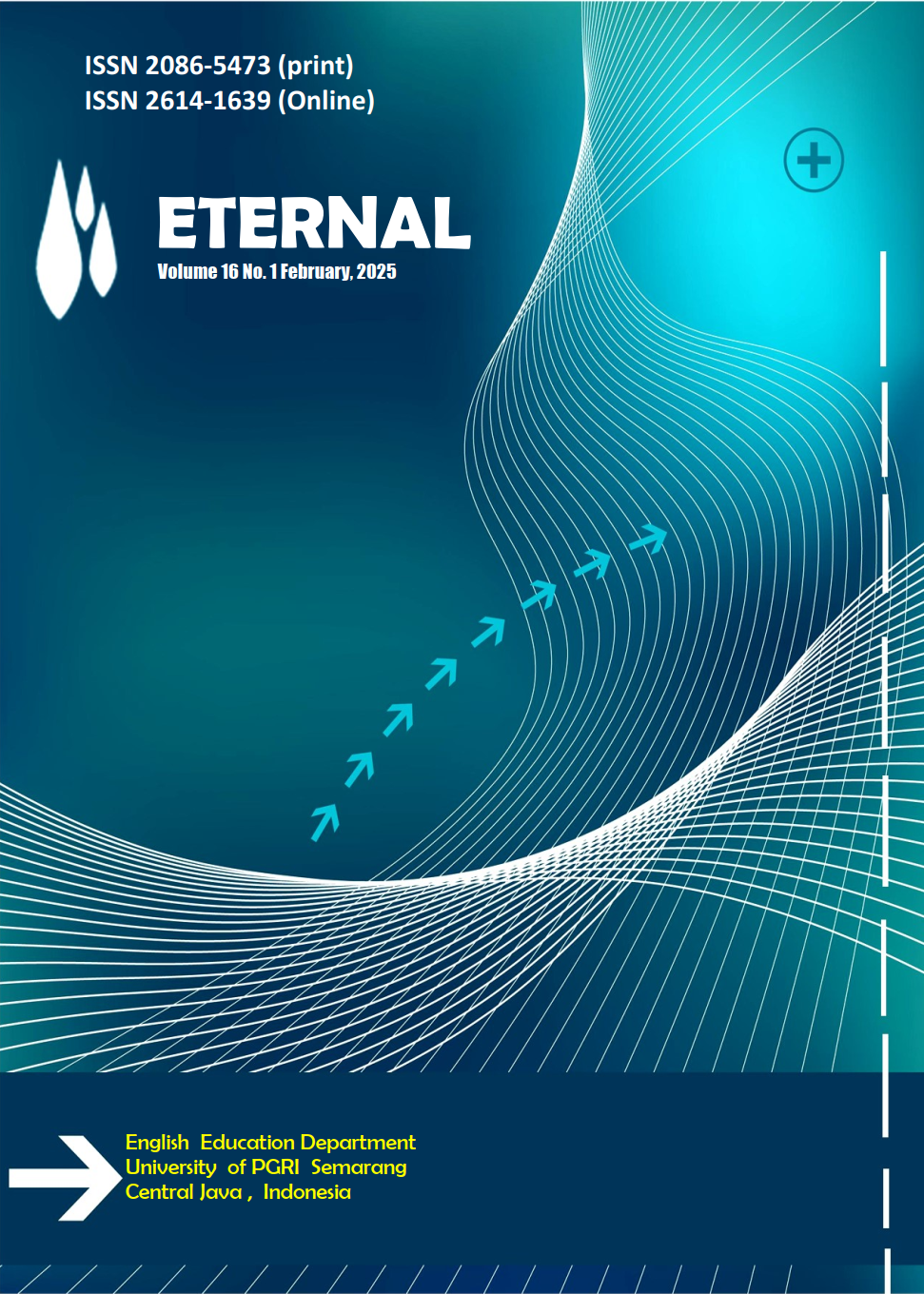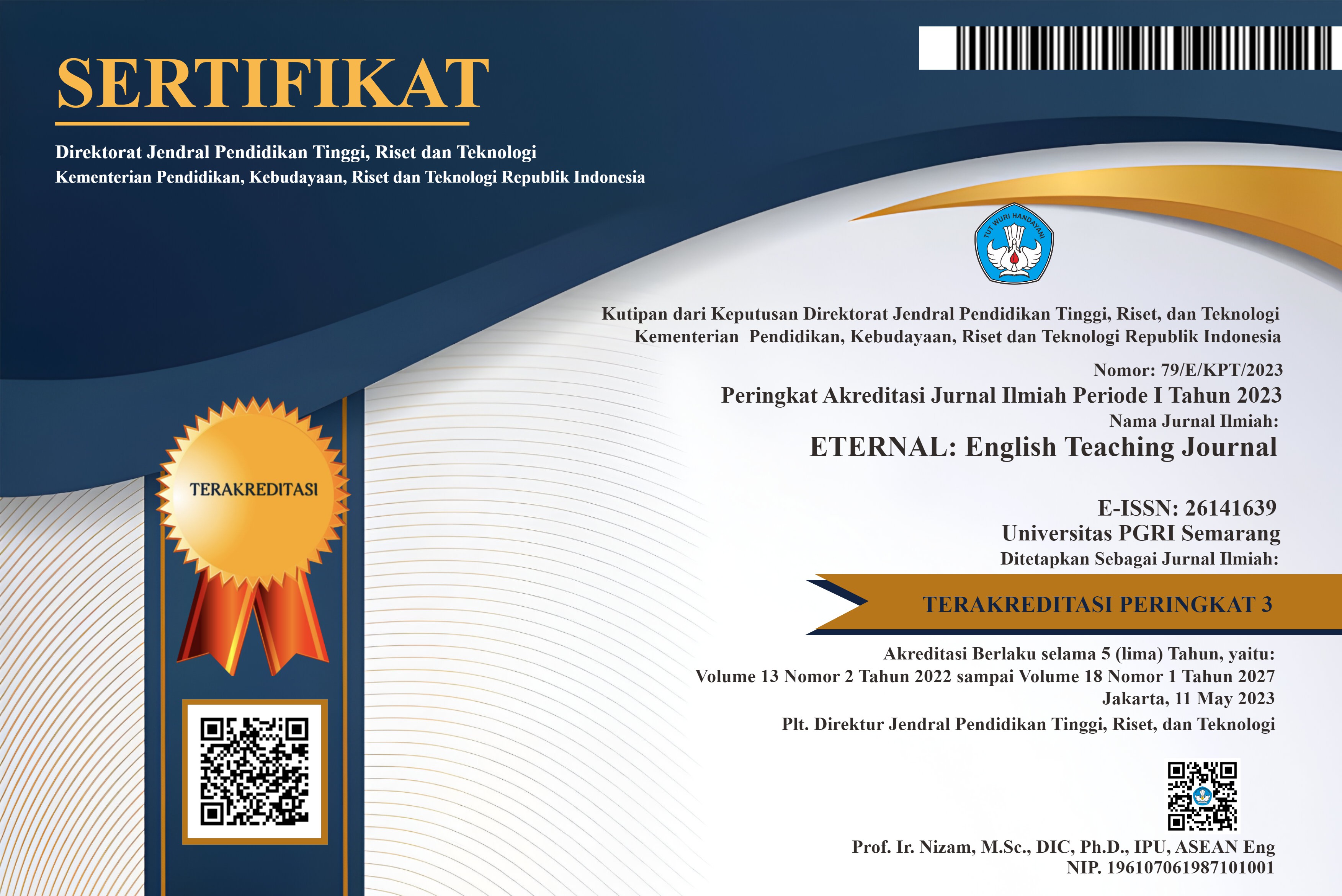AI and Decision Assistance for Enhancing Self-Directed Learning
DOI:
https://doi.org/10.26877/eternal.v16i2.1524Keywords:
AI, Decision Assistance, Directed Learning, Self-Directed LearningAbstract
Abstract. Self-directed learning (SDL) is critical in modern education, empowering learners to independently manage their learning processes and fostering lifelong learning. Despite its advantages, SDL presents significant challenges, including cognitive overload, motivational barriers, and ineffective decision-making. This study explores the potential of Artificial Intelligence (AI) to enhance SDL by providing personalized decision assistance. Using a qualitative approach—through case studies, expert interviews, and literature reviews—the study examines the use of AI-driven tools such as adaptive learning platforms, personalized recommendation systems, and intelligent tutoring systems. Findings reveal that these technologies improve resource selection, learning efficiency, and engagement by offering real-time, adaptive feedback and personalized learning paths. Participants reported increased autonomy, reduced cognitive load, and increased learners’ motivation, leading to measurable improvements in learning outcomes. However, limitations such as over-reliance on AI and the lack of emotional and contextual understanding underscore the need for a hybrid approach that combines AI with human oversight. This study highlights the potential of AI to significantly reshape and enhance self-directed learning (SDL) by making it more personalized, efficient, and accessible. It also offers recommendations for integrating AI into educational practices in ways that balance technological innovation with essential human-centred guidance
References
Abobaker, R., & Moleta, S. (2025). ESL 4.0: A Practical Guide to Benefits, Challenges, and Best Practices for AI-Enhanced Learning. In AI Applications and Strategies in Teacher Education (pp. 71–134). IGI Global. https://doi.org/10.4018/979-8-3693-5443-8.ch004
Avsec, S., & Jagiełło-Kowalczyk, M. (2021). Investigating Possibilities of Developing Self-Directed Learning in Architecture Students Using Design Thinking. Sustainability, 13(8), Article 8. https://doi.org/10.3390/su13084369
Boelens, R., De Wever, B., & Voet, M. (2017). Four key challenges to the design of blended learning: A systematic literature review. Educational Research Review, 22, 1–18. https://doi.org/10.1016/j.edurev.2017.06.001
Bosch, C., & Laubscher, D. J. (2019). Cooperative Learning as a Strategy for Self-Directed Learning in Blended-Distance Learning Environments: A Systematic Literature Review. In Student Support Toward Self-Directed Learning in Open and Distributed Environments (pp. 1–25). IGI Global. https://doi.org/10.4018/978-1-5225-9316-4.ch001
Chakraborty, S., Misra, B., & Dey, N. (2024). AI-Empowered Knowledge Management in Education. Springer Nature. https://doi.org/10.1007/978-981-97-2574-8
Chen, L., Chen, P., & Lin, Z. (2020). Artificial Intelligence in Education: A Review. IEEE Access, 8, 75264–75278. IEEE Access. https://doi.org/10.1109/ACCESS.2020.2988510
du Toit-Brits, C., & van Zyl, C.-M. (2017). Self-directed learning characteristics: Making learning personal, empowering and successful. Africa Education Review, 14(3–4), 122–141. https://doi.org/10.1080/18146627.2016.1267576
Esiyok, E., Gokcearslan ,Sahin, & and Kucukergin, K. G. (2025). Acceptance of Educational Use of AI Chatbots in the Context of Self-Directed Learning with Technology and ICT Self-Efficacy of Undergraduate Students. International Journal of Human–Computer Interaction, 41(1), 641–650. https://doi.org/10.1080/10447318.2024.2303557
Geng, S., Law, K. M. Y., & Niu, B. (2019). Investigating self-directed learning and technology readiness in blending learning environment. International Journal of Educational Technology in Higher Education, 16(1), 17. https://doi.org/10.1186/s41239-019-0147-0
Hartley, K., Hayak, M., & Ko, U. H. (2024a). Artificial Intelligence Supporting Independent Student Learning: An Evaluative Case Study of ChatGPT and Learning to Code. Education Sciences, 14(2), Article 2. https://doi.org/10.3390/educsci14020120
Hartley, K., Hayak, M., & Ko, U. H. (2024b). Artificial Intelligence Supporting Independent Student Learning: An Evaluative Case Study of ChatGPT and Learning to Code. Education Sciences, 14(2), Article 2. https://doi.org/10.3390/educsci14020120
Rana, S., Ardichvili, A., & Polesello, D. (2016). Promoting self-directed learning in a learning organization: Tools and practices. European Journal of Training and Development, 40(7), 470–489. https://doi.org/10.1108/EJTD-10-2015-0076
Ruttencutter, G. (2018). Getting Gritty with It: An Examination of Self-Directed Learning and Grit Among Doctoral Students. Doctoral Dissertations.
Saaida, M. B. E. (n.d.). AI-Driven transformations in higher education: Opportunities and challenges.
Sewell, J. L., Bowen, J. L., Cate, O. ten, O’Sullivan, P. S., Shah, B., & Boscardin, C. K. (2020). Learning Challenges, Teaching Strategies, and Cognitive Load: Insights From the Experience of Seasoned Endoscopy Teachers. Academic Medicine, 95(5), 794. https://doi.org/10.1097/ACM.0000000000002946
Singaram, V. S., Naidoo ,Kimesh L, & and Singh, S. (2022). Self-Directed Learning During the COVID-19 Pandemic: Perspectives of South African Final-Year Health Professions Students. Advances in Medical Education and Practice, 13, 1–10. https://doi.org/10.2147/AMEP.S339840
Tapalova, O., & Zhiyenbayeva, N. (2022). Artificial Intelligence in Education: AIEd for Personalised Learning Pathways. Electronic Journal of E-Learning, 20(5), 639–653.
Umar, U. (2024). Advancements in English Language Teaching: Harnessing the Power of Artificial Intelligence. Foreign Language Instruction Probe, 3(1), Article 1. https://doi.org/10.54213/flip.v3i1.402
Weidman, J., & Baker, K. (2015). The Cognitive Science of Learning: Concepts and Strategies for the Educator and Learner. Anesthesia & Analgesia, 121(6), 1586. https://doi.org/10.1213/ANE.0000000000000890







